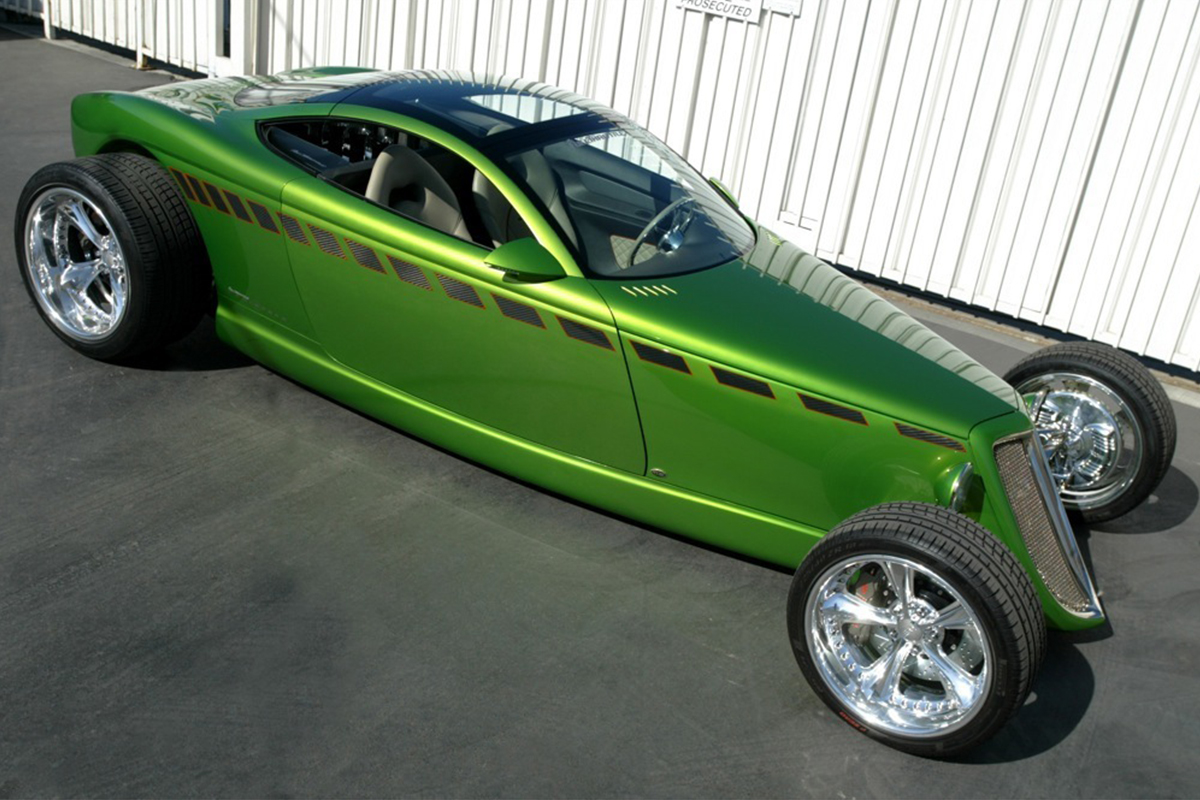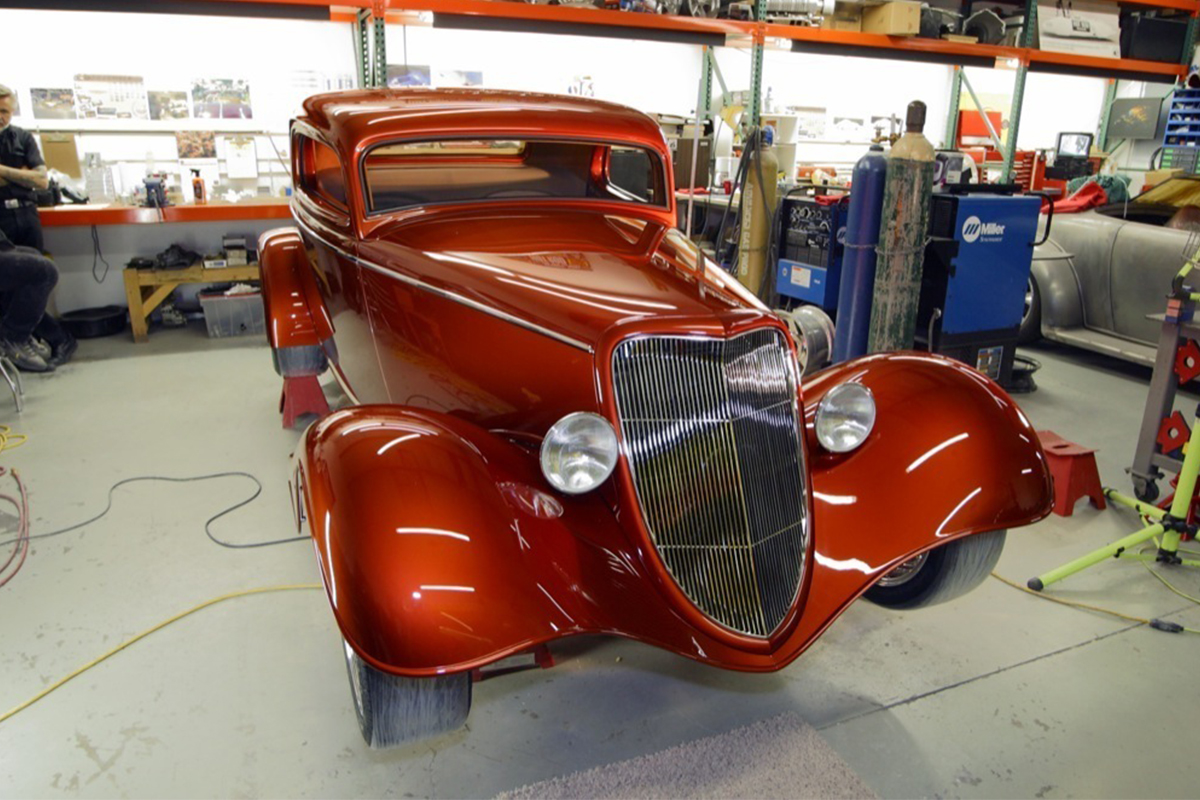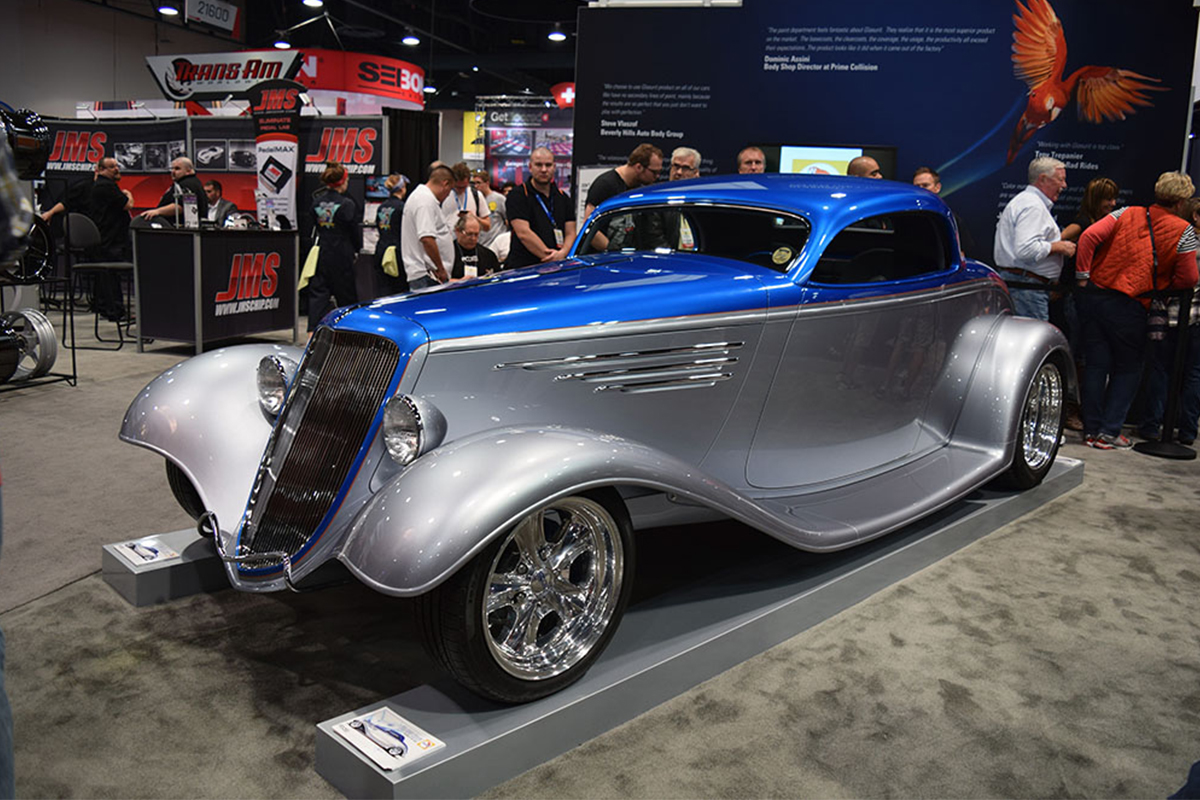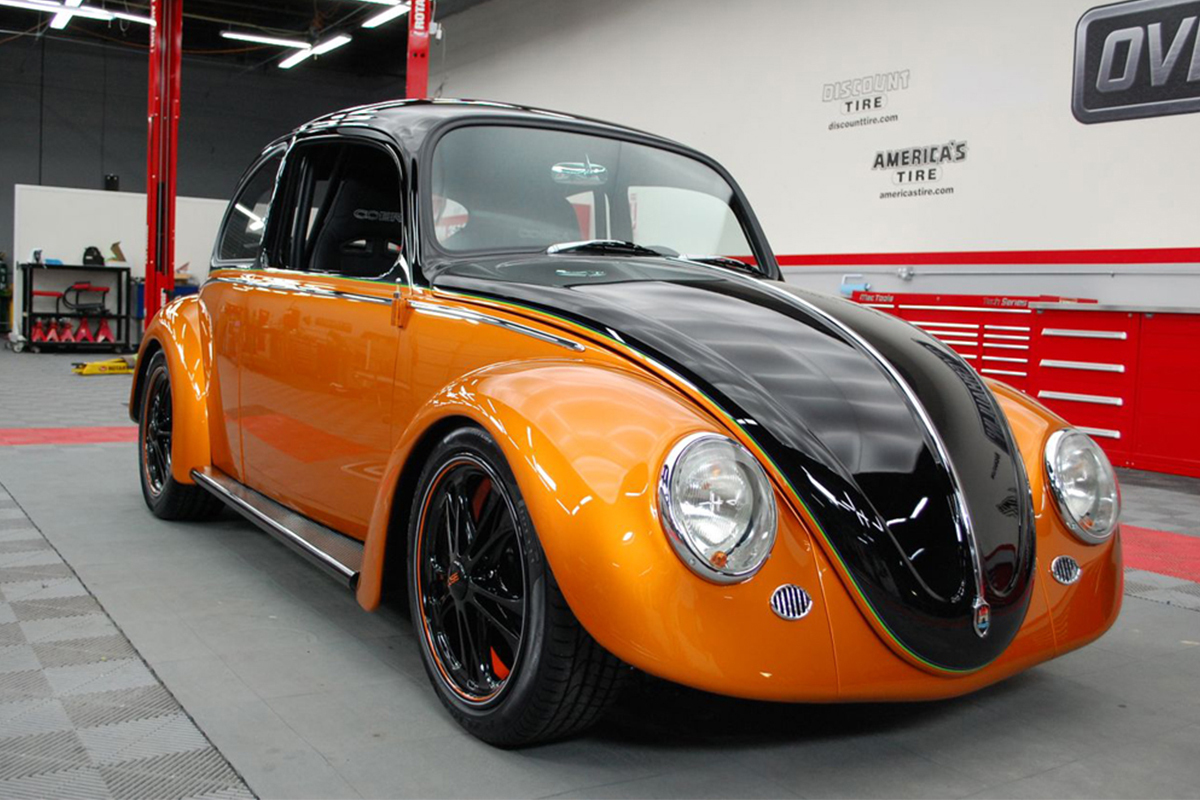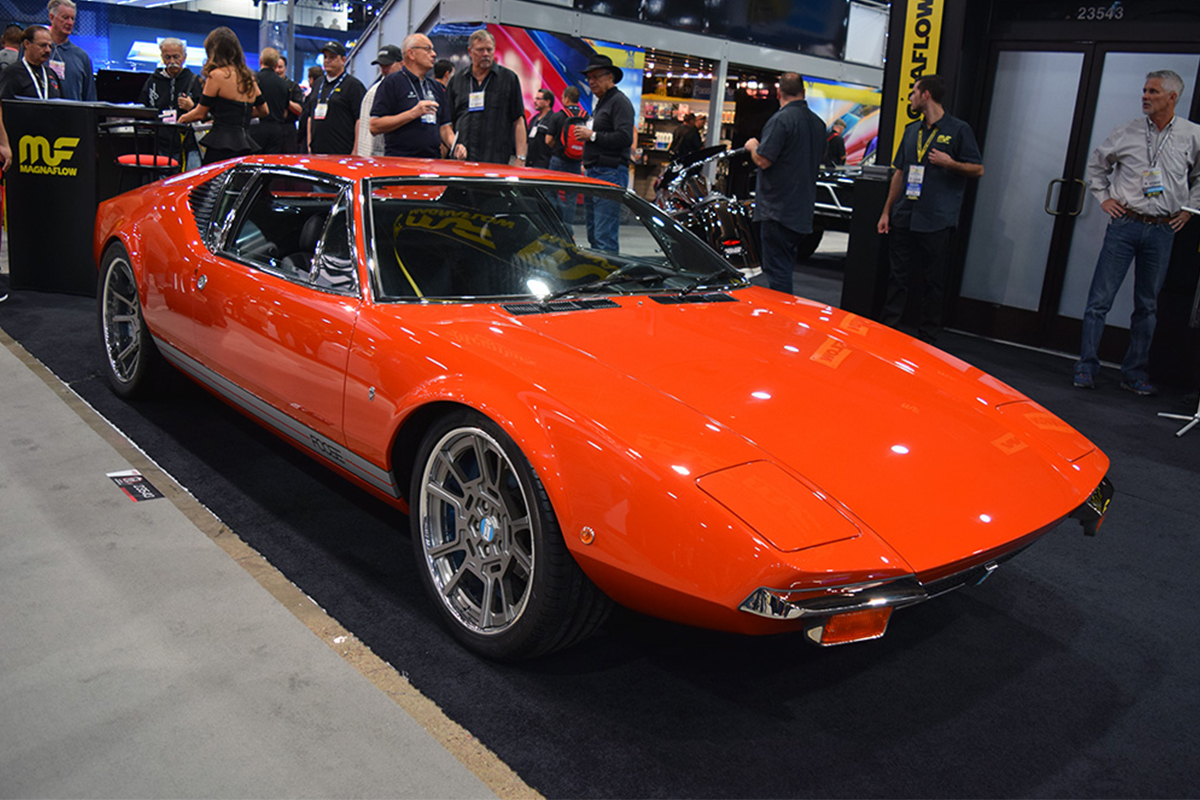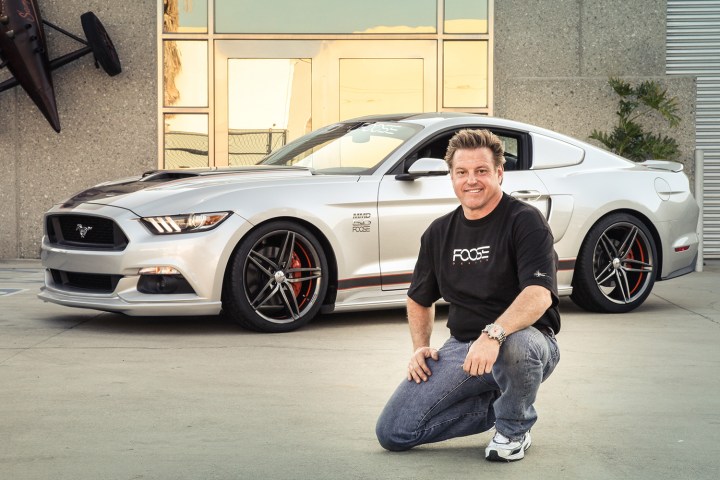
Now Foose, President and Founder of Foose Design, Inc., is celebrating his 30th year in the automobile design and customization business. Digital Trends caught up with him to talk about the state of the customized car scene and how technology is changing the hot rod and custom business.
The good ol’ days
“These are the good old days,” Foose told Digital Trends. “We’re taking advantage of technology that will keep people going forward.”
I’ve always said there’s no rules or laws in customizing or personalizing cars.
Computer-aided design (CAD) is a big part of the technology story in customs.
“You can design a hot rod in your chair, then the parts are made and you just bring it together. You can test something on the computer and build things that could never be built before. Then it’s how you hand-finish those parts that makes it stand out from another car,” Foose said.
Next-gen hot-rodders
The hot rod and custom car community where Foose made his name is facing serious challenges as an entire generation of enthusiasts ages out. Owners of custom performance cars that may have cost well over $100,000 to build often struggle to find a market where they can recoup their investment.
“You can get them so cheap now, because collectors are at an age where they don’t want to build new cars and they don’t need 15 cars in the garage,” Foose explained. “They’re looking at getting a smaller house and downsizing to keep two cars. There’s so many of them on the market, and you’ll see it at auctions where there’s just one after another of these cars coming up. If it’s not a historically important car, there’s not a lot of value to it.”
It takes quite a bit of money to buy and customize a classic car, which means that a generation of enthusiasts has be close to middle-aged before large numbers of them have the disposable cash to spend on custom cars.
“Now the age group is where they’re wanting to collect the ‘60s and ‘70s cars,” Foose related. “It’s interesting to me that the Trans-Am is so popular today. When we were younger it wasn’t the car of dreams. They weren’t sought after as something you wanted to build and keep forever. Only a few people built them and kept them nice. That’s why the value of some of those cars is so high.”
Power is cheap
In an era when you can walk onto any Dodge dealer showroom and buy a Hellcat with over 700 horsepower, the business of customizing cars is changing from a focus on increasing performance into intense attention to design.
If I knew what I was going to be doing in ten years, I’d be doing it right now.
“I’ve always said there’s no rules or laws in customizing or personalizing cars,” Foose stated. “You get to do what you want to do. You can get a car like a Hellcat, and it comes with a warranty. But the guy who wants to build his own car, he’s buying cars like that and then modifying them.”
But as the world is seeing with cars like the new Acura NSX, the BMW i8, and the LaFerrari, there’s more to performance than big displacement and forced induction. Hybrid engines are motivating some of the world’s top sports cars, and that technology is making its way into the custom world.
“The way it [hybrids] affects my work is when somebody wants to take that technology into customization,” Foose said. “I’ve been talking to a customer recently and he’s asking what if we do a hybrid or an electric car? I’d love to do something different – so far it’s just conversation but you’re going to see that technology. Because when technology is available, it gets brought into the aftermarket world.”
What dreams my come
When it comes to inspiration, Foose has ideas that both look ahead and back to the great designers of the past. The project on his mind today is a customized Cadillac concept car that was drawn decades ago, but never built.
“Art Ross was the designer for Cadillac in the ‘30s, and he had done a drawing of this really cool convertible. Wes Rydell had seen the sketch, I had seen the sketch, and we both started talking about it.”
Rydell owns one of the largest GM dealership chains in the country, with showrooms in 14 different states. Additionally, he’s a collector and custom enthusiast.

“We found a Cadillac and started cutting it apart,” Foose explained. “It was a four-door sedan, and we’ve turned it into a two-door with what will look like a convertible folding top, but it’s a lift-off aluminum top that will be wrapped in canvas. When it’s finished, it’s going to look like an old car from outside, but underneath is a brand new 2015 Corvette power plant. It’s got a 2015 Suburban eight-speed automatic transmission, it’s got a 2015 Camaro center section. It’s all original GM parts.”
Foose’s goal is a perfect blend of classic design sense with modern equipment.
“It will look like a concept car from Cadillac in the ‘30s,” Foose said. “Everything is brand-new technology, but when you step back it will look like an old car. We’re having a lot of fun with this car.”
Asked to look to the future, Foose is adamant that he’s focused on today’s work, while offering a few clues about where his imagination is taking him next.
“If I knew what I was going to be doing in ten years, I’d be doing it right now,” Foose exclaimed. “The main project I hope to be working on within ten years, or even sooner, is I would like to be working on a Duesenberg.”
The appeal of the full classic Duesenberg to a designer is easy to explain.
“When you bought a Duesenberg, you bought a chassis, and then you went to a designer to design a body, and then a coachbuilder to build that body for you. I’d like to find a chassis that I can design and build my own body on. But I want it to look like it was done back then. That’s my future goal.”
But as eagerly as he talks about the next project, Foose then pivots back to the present.
“Right now what I’m doing is focusing on the projects that we have,” he insisted. “I like to stay busy but I also like to be free enough to take advantage of good opportunities. It’s the opportunities that will drive you towards where you’re gonna be in the future.”
